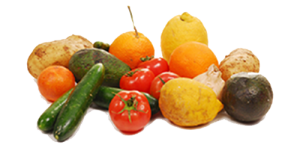These gardening resources are designed to help you in selecting the right garden location, building raised and container beds, planting and watering techniques, controlling insects, composting, and maintaining and harvesting from your garden! Please feel free to utilize these resources to support your home and community gardening efforts.
Do you want more? If you are interested in starting a community garden program, we invite you to start a Growing and Nourishing Healthy Communities Garden Course/Program in your neighborhood. Texas A&M AgriLife Extension aims to deliver research-based educational programs and solutions for Texans. Your local county Texas A&M AgriLife Extension office can assist you with starting and implementing this garden program in your community. Click here to contact your local county office to get started.
Program participants will have access to resources, volunteers, cooking demonstrations, and technical expertise from your local Extension professional. Additionally, all participants will receive certification for their participation in a registered Growing and Nourishing Healthy Communities Garden Course! The Growing and Nourishing Healthy Communities Garden Course, which is funded, in part, by the Supplemental Nutrition Assistance Program (SNAP), helps increase the availability of fresh produce through teaching participants how to grow fruits and vegetables in their community and backyard gardens.
*Course Fact Sheets available in pdf form (English/Spanish) at bottom of page*
Choosing a Garden Location
At the end of this session, program participants will be able to identify the characteristics of a good garden site based on light, water availability and soil requirements. Participants will also be able to determine the best size garden to fit their needs and begin the process of deciding which vegetables and herbs to grow.

Soils and Compost
At the end of this session, participants will be able to evaluate soils and identify the main component as sand, silt, clay, or loam. Understanding soils and the important role they play in plant health is important to every gardener. Participants will also learn how to make compost, what materials work well, and which ones do not. They will understand that to be successful, compost should be kept at approximately 60 percent moisture and turned on a weekly basis.
Raised Beds and Container Gardens
At the end of this session, participants will be able to make “pots” from newspaper and plant seeds or seedlings to begin a garden. They will also understand how to build a garden bed or prepare large containers for planting.
Maintaining Your Garden
At the end of this session, participants will be able to identify good maintenance practices common to all vegetable gardens. These practices include watering consistently, maintaining a weed-free garden, mulching to prevent weeds and regulate soil temperature, fertilizing plants to provide nutrients, and monitoring plants for insect pests and diseases. By keeping a garden journal, participants will learn to use their observation skills, investigate problems, and record measures taken to resolve problems. The community gardens should be constructed and planted by the time you offer this session.
Diseases and Insects
At the end of this session, participants will be able to identify common vegetable garden insect pests as well as symptoms of common plant diseases. They will be able to determine when treatment is necessary and how to avoid potential problems.
Harvest, Storage and Crop Information
At the end of this session, participants will be able to identify the best practices for harvesting, handling, and storing produce. Participants will also learn about saving seeds.
English
- Artichokes (EHT-065)
- Asparagus (EHT-066)
- Beets (EHT-050)
- Carrots (EHT-035)
- Cilantro (EHT-032)
- Cole Crops (EHT-067)
- Collard Greens (EHT-051)
- Cucumbers (EHT-033)
- Dill (EHT-053)
- Eggplant (EHT-036)
- Ginger (EHT-014)
- Green Beans (EHT-057)
- Melons (EHT-034)
- Okra (EHT-058)
- Onions (EHT-037)
- Peppers (EHT-038)
- Irish Potato (EHT-068)
- Radishes (EHT-042)
- Rosemary (EHT-068)
- Spinach and Other Greens (EHT-040)
- Squash (EHT-041)
- Sugar Snap Peas (EHT-015)
- Sweet Corn (EHT-044)
- Sweet Potatoes (EHT-026)
- Tomatoes (EHT-043)
- Tomatillos (EHT-025)
- Turnip and Mustard Greens (EHT-061)
- Composting (EHT-069)
- Composting to Kill Weed Seeds (EHT-052)
- Disease Control (EHT-054)
- Fertilizing (EHT-070)
- Harvesting and Handling (EHT-071)
- Insect Control (EHT-072)
- Mulching (EHT-073)
- Planning (EHT-074)
- Planting (EHT-075)
- Soil Preparation (EHT-076)
- Watering Your Vegetables (EHT-024)
- What Makes Tomato Leaves Twist or Curl? (EHT-064)
- Building a Raised Bed Garden (EHT-078)
- Vegetable Gardening in Containers (EHT-062)
- Texas Home Vegetable Gardening Guide (EHT-077)
- Selecting Fresh Fruits and Vegetables (E-197)
- Safe Handling of Fresh Fruits and Vegetables (E-198)
- Washing Fresh Fruits and Vegetables (E-198)
- Safe Storage of Fresh Fruits and Vegetables (E-200)
Spanish
- Alcahoras (EHT-065S)
- Esparragos (EHT-066S)
- Remolocha (EHT-050S)
- Zanahorias (EHT-035S)
- Cilantro (EHT-032S)
- Cultivo de Coles (EHT-067S)
- Col Rizada (EHT-051S)
- Pepinos (EHT-033S)
- Eneldo (EHT-053S)
- Berenjena (EHT-036S)
- Jengibre (EHT-014S)
- Frijoles Verdes (EHT-057S)
- Melones (EHT-034S)
- Quingombo (EHT-058S)
- Cebollas (EHT-037S)
- Pimientos y Chiles (EHT-038S)
- Papas (EHT-068S)
- Rabanos (EHT-042S)
- Romero (EHT-039S)
- Espinacas y Otras Verdudras de Hoja Verde (EHT-040S)
- Calabacitas (EHT-041S)
- Guisantes Dulces (EHT-015S)
- Maiz Rules (EHT-044S)
- Camotes (EHT-026S)
- Tomates (EHT-026S)
- Tomatillos (EHT-025S)
- Nabos y Mostaza (EHT-061S)
- Compostaje (EHT-069S)
- Elaboracion de Compost para Exterminar Semillas de Malezas (EHT-052S)
- Control de Enfermedades (EHT-054S)
- Fertilizacion (EHT-070S)
- Cosecha, Manejo, y Almacenamiento de Vegetales (EHT-071S)
- Control de Insectos (EHT-072S)
- El Mantillo (EHT-073S)
- Como Planear un Huerto (EHT-072S)
- La Siembra (EHT-075S)
- Preparation del Suelo (EHT-076S)
- Riego de Las Verduras (EHT-024S)
- Que Hace Que Las Hojas del Tomate Se Doblen o Enrollen (EHT-064S)
- Construccion de Arriates Elevados (EHT-078S)
- Jardineria de Verduras en Contenedores (E-545S)
- Selecciónando Frutas y Verduras Frescas (E-197S)
- Manejo Seguro de Frutas y Verduras (E-198S)
- Manejo de Frutas y Verduras Frescas (E-199S)
- Almacenamiento Seguro de Frutas y Verduras Frescas (E-200S)



